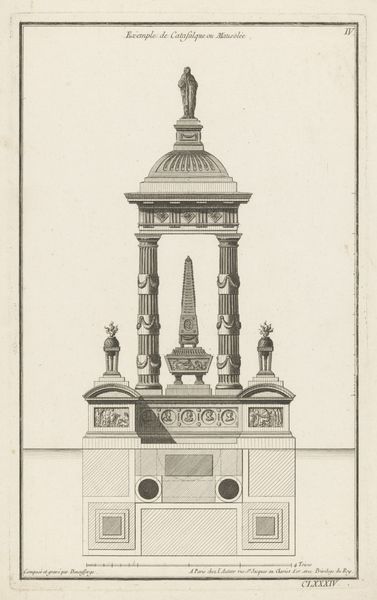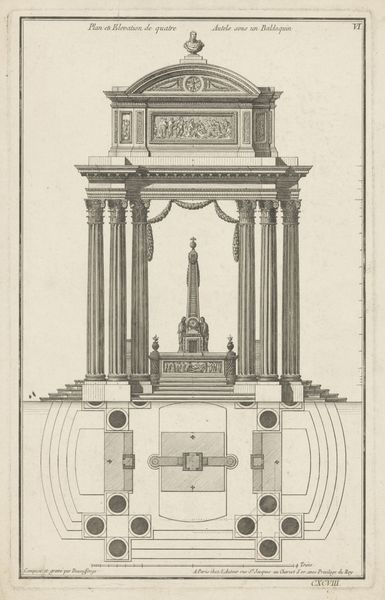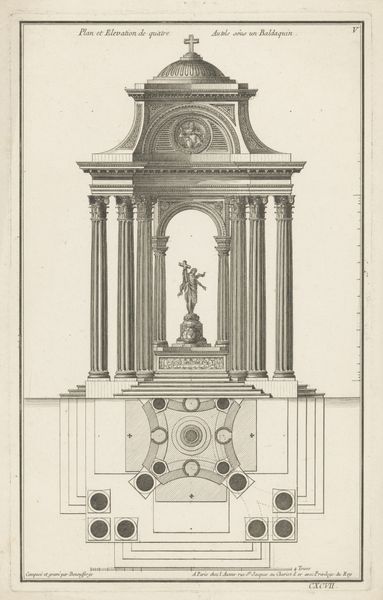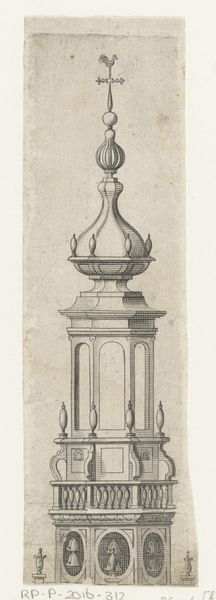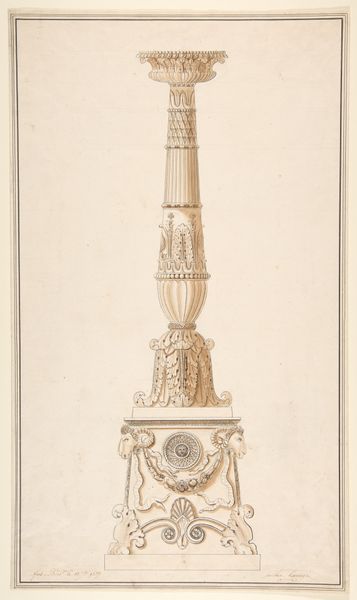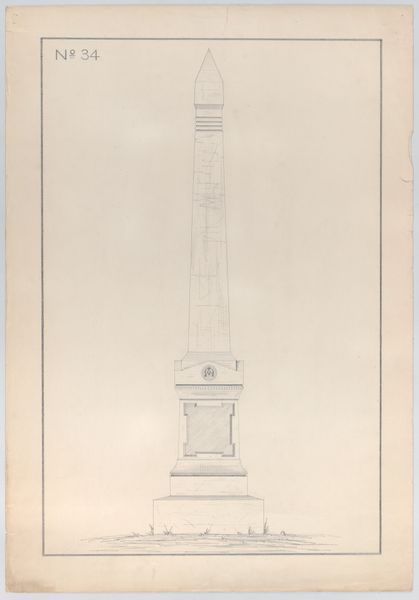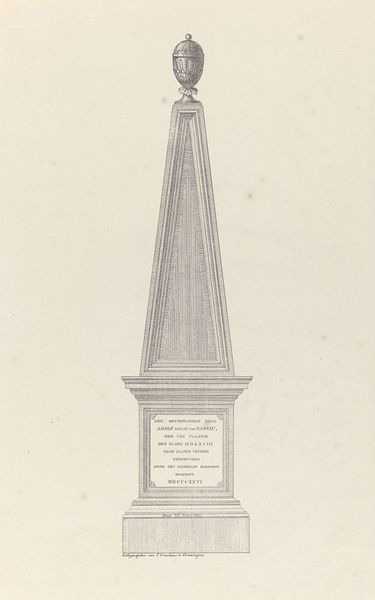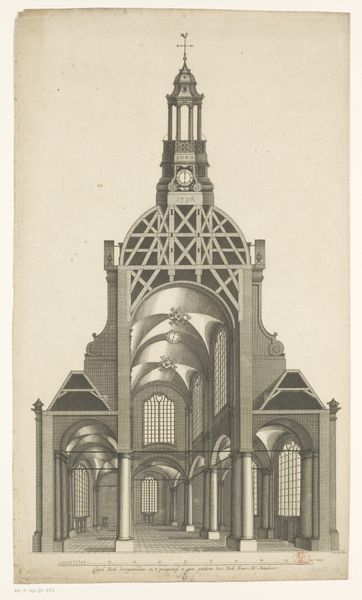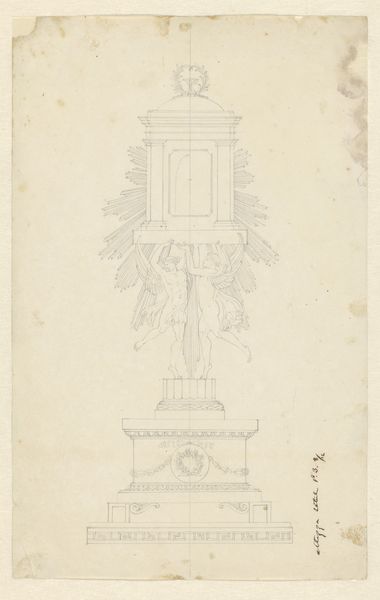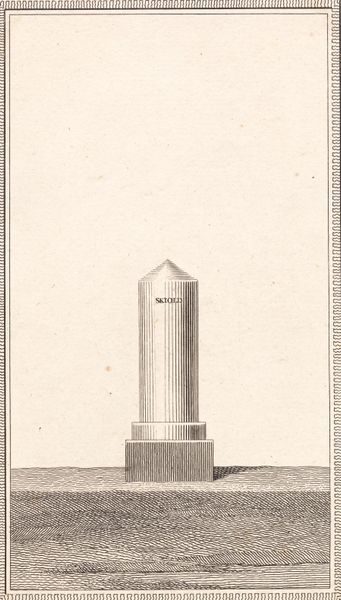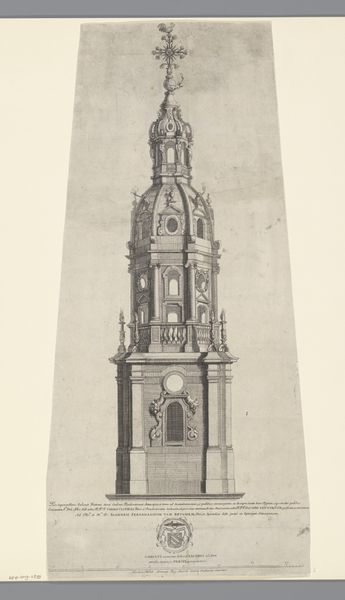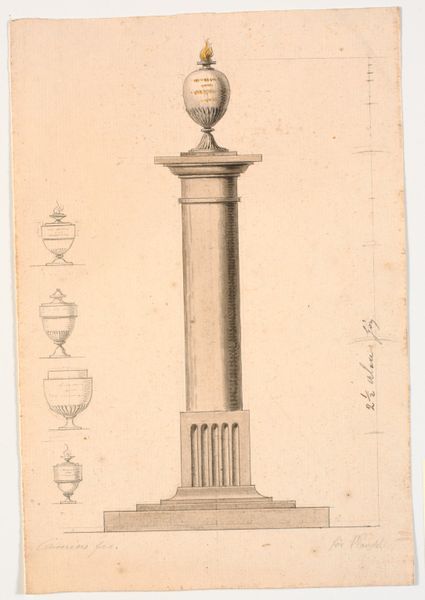
drawing, engraving, architecture
#
drawing
#
neoclacissism
#
landscape
#
engraving
#
architecture
Dimensions: height 363 mm, width 228 mm
Copyright: Rijks Museum: Open Domain
Curator: Here we have "Katafalk met obelisken," an architectural drawing, or more precisely, an engraving by Jean François de Neufforge, dating back to somewhere between 1772 and 1780. It is currently held at the Rijksmuseum. Editor: Oh, my. Isn't it magnificent? It seems strangely calming. Like a quiet giant patiently waiting, dreaming. And the swirling obelisk rising, like thoughts climbing upwards. Curator: Yes, there's definitely a stillness. What you're picking up is perhaps a symptom of the Neoclassical movement—this deliberate return to classical forms, an almost archeological excavation of a monumental style. But also, what do you think about the social and political environment informing Neufforge’s work? Editor: Hmm. On one level, Neoclassicism projects an imperial kind of power—the state rendered through buildings and monuments. However, these projects also show this hunger for finding perfect forms and shapes, with perfect clarity. Maybe an illusionary escape. And I sense that hunger, right, as the obelisk reaches higher and higher. Curator: Precisely, these imagined structures reveal complex historical narratives. We can consider, on one hand, this aspirational imperialist power through architecture as connected to gendered and class-based norms that further the entrenchment of monarchy in European aristocracy. This sort of architectural fantasy is of course totally exclusive to its context. Editor: Sure. Exclusivity, I suppose it is about access. And this architectural drawing—or architectural possibility—would then almost literally restrict that access. Like, come gaze but never enter. Still I love how this engraving plays with line. How that shaded bit there almost hints at secrets... things buried or hidden... Curator: What’s intriguing is how he manipulates those formal conventions. What appear to be very organized linear, structured forms quickly shift into landscapes or garden environments. We should not ignore its possible escapist quality. Editor: I love the interplay here, now you have me really looking. Escapist indeed. Maybe architecture that soars also liberates? I feel that the work now offers a different reading. Curator: It is exactly that. "Katafalk met obelisken," captures not just the style of an era, but all its contradictions too. The real brilliance lies not only in its structural and architectural style, but rather what's going on within it all. Editor: Right. And maybe that's why I love it so much. It's a beautiful escape, but tinged with longing.
Comments
No comments
Be the first to comment and join the conversation on the ultimate creative platform.
